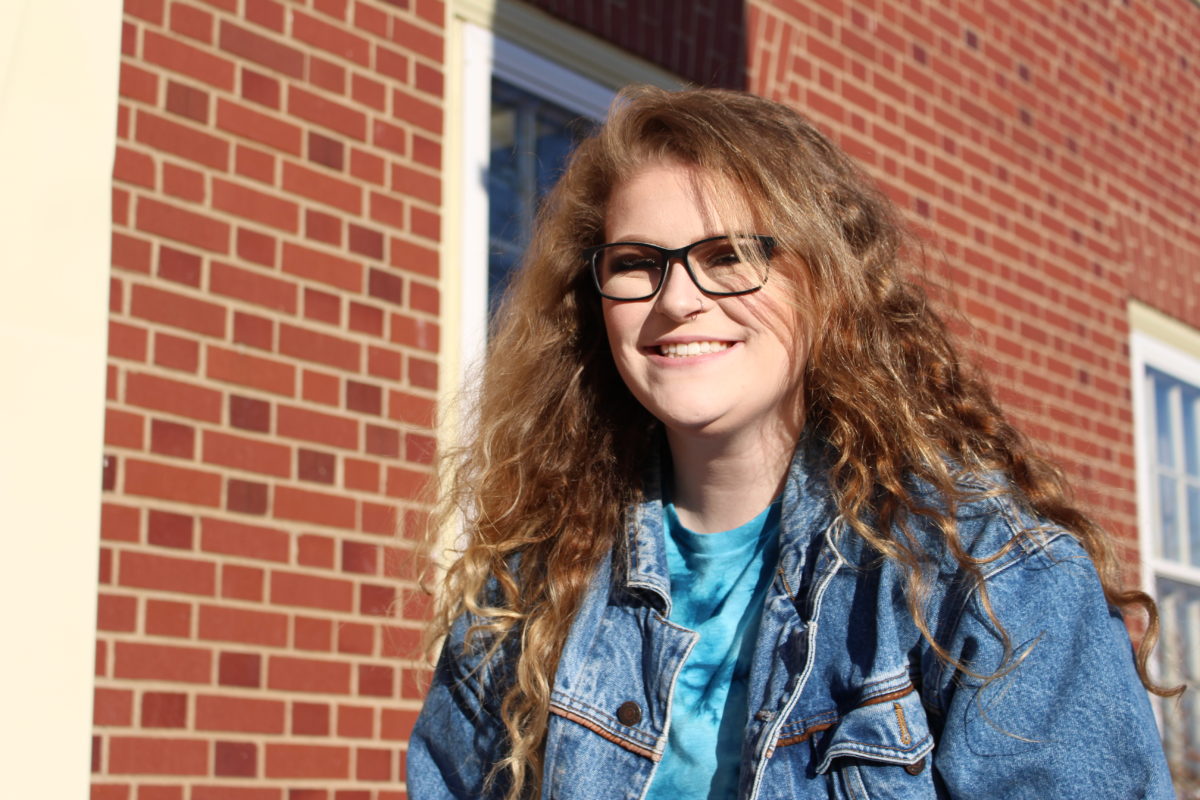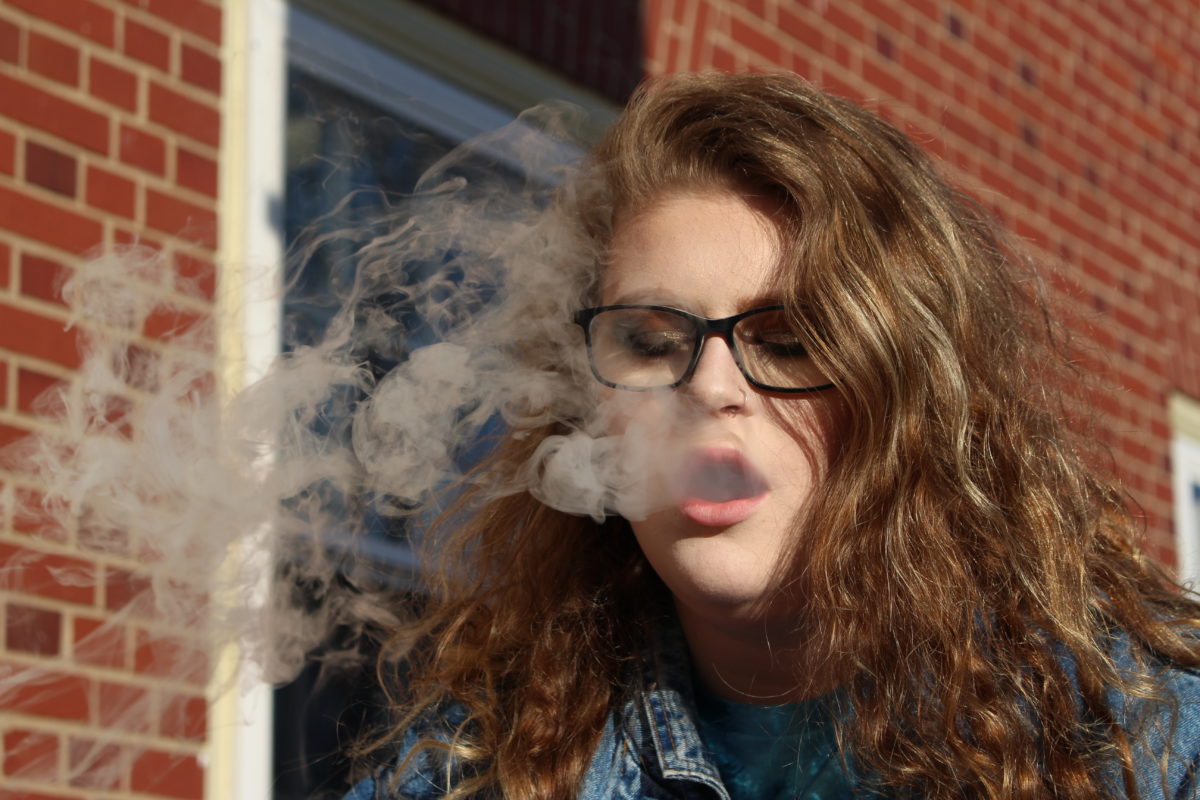The last time second-year St. Thomas University student Kayley Graham visited her parents, her mom threatened to call the police.
She had been smoking cannabis to manage her depression, ADHD, anxiety, self-harming and suicidal thoughts, but her mother didn’t like that.
“She could smell it and she was like, ‘Never again on the property,’ … We’ve had beef ever since then.”
Even though many people still look down on cannabis, Graham says she’s never been happier.
She’s smoked cannabis recreationally for the last two years, but last summer she realized it was helping her overcome her mental illnesses. She talked to a specialist via Skype, filled out some paperwork and became a member of King Canna, a dispensary in Fredericton.
“I’m not doing this anymore for fun. It’s like a medication,” Graham says.
Even though cannabis will be legalized across Canada on July 1, STU doesn’t cover the cost of cannabis in its health plan. And some people, like Graham’s mom, still resent all use of it.
“[Older people] all think it’s bad and that it’s hoodrats who smoke.”
No student medical coverage
The STU Students’ Union doesn’t cover medical cannabis even though studies say it can help individuals with mental illnesses, like anxiety and post-traumatic stress disorder, as well as physical illnesses and chronic pain.
Matt LeBlanc, STUSU’s vice-president administration, says there’s a reason for this.
He says cannabis doesn’t have a drug identification number, which is a status acquired through a lengthy, expensive drug-approval process. LeBlanc also says the cost and regulation uncertainties are other reasons the Union doesn’t cover it.
Still, STUSU has made exceptions.
“Students have come up and if they can prove to me that it’s a substantial medical concern … we’ll go through the emergency medical bursary line,” says LeBlanc.
But Graham says it’s probably a good idea STUSU doesn’t cover medical cannabis because some might abuse the coverage.

“Some people just go to doctors and make up lies … so I don’t think they should cover it unless it’s in severe cases,” Graham says.
LeBlanc says he hopes the pressure on STUSU to cover medical cannabis will be alleviated once recreational cannabis is legalized.
“The best-case scenario is for it to become legalized, to quickly become like Tylenol where people can have access to it in certain doses.”
Policies and regulations across Canada
In Canada, medical cannabis has been legal since 2001.
People with medical needs have the constitutional right to possess, grow and have access to medical cannabis in different forms — but they still require a permit.
Right now, the only way for patients to access Health Canada-approved medical cannabis is via mail order.
The Canadian government plans to legalize cannabis for recreational purposes on July 1.
The federal government has recommended frameworks, but it’s up to the individual provinces to set their own guidelines.
New Brunswick released its framework in November.
Like alcohol, public use will be prohibited and those under 19 will not be allowed to buy or possess the substance. Driving under the influence will still be illegal.
Twenty official Cannabis NB stores will be placed across the province. They will be the only locations legally selling authentic medical cannabis.
Despite the regulations N.B. has put forward, Graham doubts people will comply.
“It’ll be like jaywalking … I don’t think it’s going to be that strictly upheld.”
But once it’s legalized, she suggests this will get rid of the stigma.
“I think it will more blur into something people just do.”
One substance, two uses
Shawn, a STU alumnus who requested The Aquinian only use his first name, is a self-described advocate for cannabis legalization and its medicinal benefits. He uses cannabis to treat his anxiety disorder.
He says there’s a clear difference between the use of recreational and medical cannabis.
“If you’re someone who uses it at the end of the day to unwind, that doesn’t mean you need to get a prescription.”
Shawn says he was against using medical cannabis as an alternative to the pharmaceutical medication he was taking which left him nauseous. When he tried medical cannabis, he was surprised.
“I ended up finding out that it was something that meshed with my body so much better and it was natural.”
But the high isn’t necessary. Cannabis can be purchased without THC, the psychoactive part of the substance. Without THC, it works solely as an anti-inflammatory medication.
But even that is still stigmatized.
“If you even mention that it’s in weed, then the conversation changes,” Shawn says.
“Those words are like trigger words for some people. Say cannabis and they say, ‘Keep it down. I don’t want to be arrested.’”
Education for students and STU
Graham says forming a new narrative is key.
“When they made the laws, it was all just, ‘They’re all drugs,’ and now weed is coming out of that [category] and it’s hard to separate them,” she says.
Even though Shawn no longer attends STU, he hopes the university will inform students on safe and ethical ways of using.
“The best approach would be to tell people what their limits are,” Shawn says.
“It’s not addictive, but it can be mentally addictive … We need people to understand it is like alcohol. Too much of anything is a bad thing really.”
Unlike the “gateway drug” narrative taught in schools, STU plans to educate students on all uses of cannabis.

STU spokesman Jeffrey Carleton said training for residence staff and student leaders, online education programs and lectures on campus may be ways the university addresses cannabis on campus.
STU will establish an advisory committee this spring on the legalization of cannabis, composed of representatives from faculty, administration, student services and a student to make policy recommendations to the university. STU is also seeking to fill the Health Research Chair in Cannabis, a position it announced in May 2017.
Above all else, Shawn believes a conversation needs to be started to end the stigma.
“We need to start seeing leaders come out and say that they use [cannabis] for medicinal purposes and show [the public] there’s nothing to be afraid of.”

